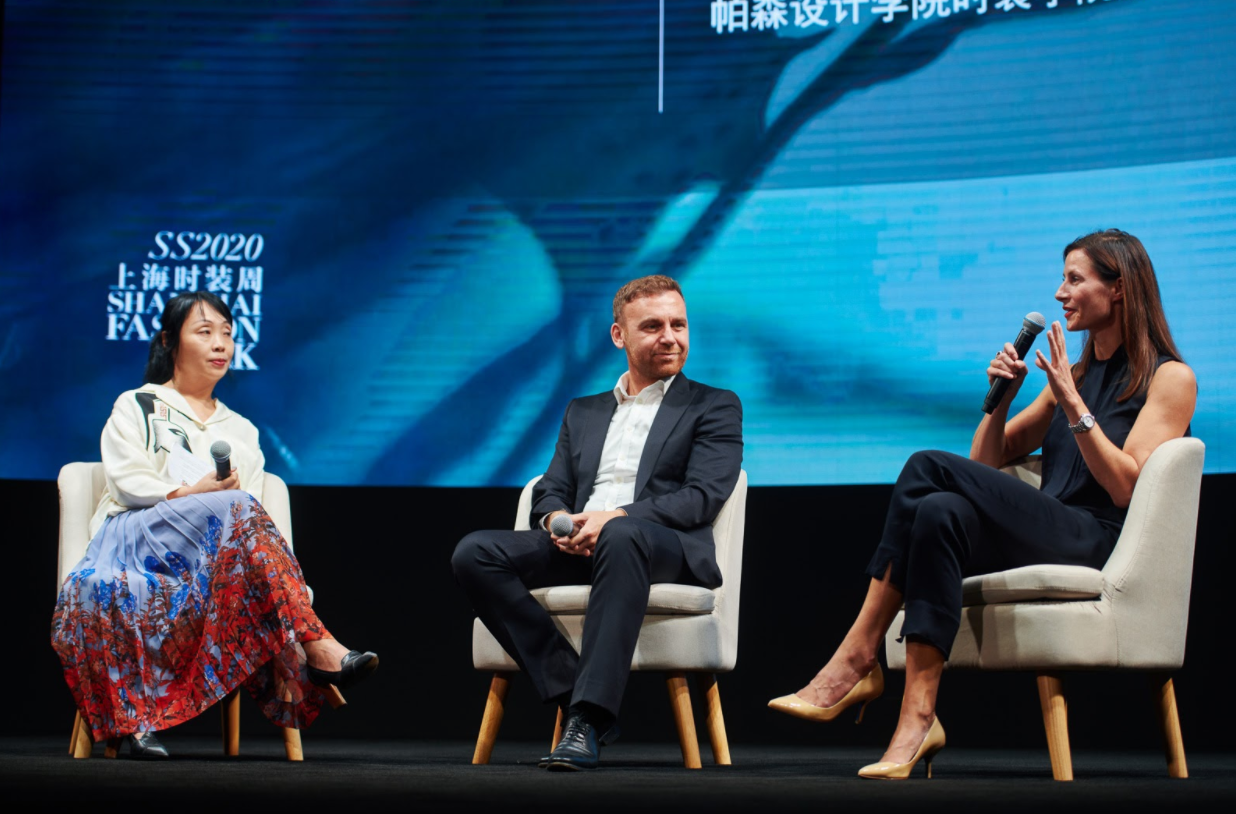Fashion media veteran Shaway Yeh is the next creative to be highlighted as part of the Jing Daily community of individuals who have helped build China’s booming luxury industry. This section profiles industry leaders who are contributing to the national and global fashion communities, from consumers and behind-the-scenes employees to business executives and influencers.
Shaway Yeh was a disruptor before the Chinese fashion industry knew what disruption meant. From creating a style publication aRUDE in New York, to venturing into the dawn of creative burst in China at Modern Weekly in early 2000, the media veteran has over a decade experience of pushing the envelope in fashion media. With her sharp intellect and avant-garde style, Yeh constantly reshapes readers’ sense of fashion – both culturally and visually. Being innovative is ingrained in her DNA, and her individual content certainly challenged readers and fans to catch up with her spearheading persona.
Yeh had an epiphany while attending a leading business event on sustainability in fashion – the Copenhagen Fashion Summit - four years ago. For the first time, she was completely immersed in conversations about the social impact of fashion; she found herself discussing the impact effect on the planet as well as society, among the greater community, instead of a superficial understanding of fashion that is focused on imagery and vanity. “I didn’t know if this [advocating for sustainability] is what I want to do, but I need to know what’s happening. I cannot be in this industry without knowing its true impact,” she said firmly.
Fueled with a new wealth of curiosity inspired by the conference, Yeh committed herself to exhaust the subject matter and built up her knowledge on the subject. She undertook a one-year certificate program at Harvard in Corporate Sustainability, and after doing a lot of research as well as interviews with leading figures in the sustainability community, she decided her new focus. “I think there are too many clothes in the world. I am not going to come up with producing anything new, I am going to help existing companies to make their practice more sustainable.” Since then, her consultancy, Yehyehyeh, has worked with many local and international companies such as Chinese cashmere group Erdos and Kering. Leading from a top-down approach, Yeh is shaping the future of sustainable fashion in China.

However, the sudden outbreak of Covid-19 brought a seemingly futuristic scenario swiftly into focus. It was a wake-up call for many including Yeh. It was eight AM in the UK when I connected with her via a long-distance call. She was visiting the circular economy leader Ellen MacArthur. “It was a rare chance for me to connect with people I don’t get to see often, and reflect in-depth on how we live and approach the concept of sustainability philosophically,” she said of her month-long abroad time.
Now in the post-virus new-normal world that Yeh illustrates for us below, the industry influencer believes that companies must embrace communities and be open to disruption, she encouraged designers and Chinese companies alike to control their own identity. Finally, in light of a crisis, she highlighted the gaps in the industry such as the lack of protective and medical wear.
Where were you when you heard about the outbreak?#
I cannot say too much about the outbreak because most of the time I wasn’t in China. My friend in Taiwan had warned me about it and they were wearing masks to protect themselves. Around January 21 or 22, the news came out right before Wuhan was locked up. I was kind of nervous. I think the most shocking and interesting thing was that people’s understanding of its effect was changing every day, as was the situation.
Then I went back to Taiwan for Chinese New Year. The original plan was to stay a few days and then return to Shanghai. I was to fly to New York for an event then back to Shanghai, and then on to the U.K. for the Woolmark Prize [Yeh was a jury member]. My parents told me not to go back to Shanghai so I changed my flight to go to New York instead. It felt very surreal because I thought I was overreacting but flights were canceled, borders were closed, and it gave an extreme sense of urgency. All the things which you don’t think are possible started to happen all of a sudden.
How has the virus crisis challenged or reinforced your belief in sustainable fashion?#
In a crisis like this, my dilemma is how can I convince people that sustainability is still important? Fashion is a business, many stores and businesses are closing down because no one is buying, so it’s difficult to talk to them about sustainability right now. How do I make a convincing case or business argument?
The other day, I was at this panel organized by the Global Fashion Agenda (a leadership forum on sustainability in fashion), people from the sports brand Allbirds and the retailer Selfridges were there to speak. It’s great to hear we need to be conscious, and corporations need to take responsibility, but it’s kind of self-generated. Most of the time, people are ignoring the impact of bigger forces like global warming or the virus. It is only when it hits, we realize how ill-prepared we are.
It’s so important to remember the principle of sustainability, especially now. Because the way businesses are dealing with the crisis should be something you carry into your daily work. How do you do things during and after the disruptions? That’s probably the most meaningful thing to keep in mind. It’s hard for companies to survive if they don’t come up with more resilient and adaptive ways.
There is a lot of talk about digital. Should this be the priority for brands to survive through this situation?#
I think digital-first is one option. But, it’s also about different ways of connections, like connecting with our environment, nature, and people. Over the past month abroad, I had some in-depth conversations with designers in New York and London. Their businesses are affected and even though they are small, they are being the more creative ones during this time. I would propose – and not just because of sustainability – they adopt a much deeper and meaningful way of linking to their community, and not only to stores, VIPs, or VIC but with the people who make clothes, who weave yarns, or farm the land.
If you think of these different layers of community and try to reconnect with them, there are multiple benefits. To start with, it’s a more meaningful way to approach fashion; also, a lot of businesses can benefit from this process, not just through selling clothes, but by focusing on each link of the supply chain and refining the process.
What should be the focus of companies at this time?#
I think companies can ask themselves several questions: Firstly, can this be an opportunity for companies, especially Chinese ones, to endure? If they survive, they will be much stronger and pave their way to a stronger legacy.
Secondly, how do you develop online and offline interaction? I think it is through infrastructure - how do you make it bigger and better? And, what is the value you are offering to your consumers? Because, during such a crisis, why do consumers need to buy your product? Each company or designer should think about its value.
And, thirdly, companies could think about selling a product that’s not traditionally considered fashion. This is where I had a big revelation: The world doesn’t have enough masks or protective clothing. That’s kind of ridiculous, right? Can a company produce good quality items fashionably? I was talking about this with designers about how to use bio-material for all kinds of purposes - leather made from apples or fabrics produced from oranges. Can we use this crisis to push for more research into bio-materials? Can we invent fabrics or even sprays that can heal or protect physically? And can we embed smarter functions - sensory and communication – in our fabric or apparels?
What’s the most radical sustainable fashion approach you have seen so far?#
When I was judging the Woolmark Prize this year, it surprised me that at least four out of the ten nominees really understand sustainability. Their approach was holistic, very deep and systematic. Designers like Richard Malone and Emily Bode are not talking about traceability in terms of knowing where their fabrics come from – what they are doing is more radical. It’s about going back to regenerative agriculture as that’s where your materials can restore the soil. So they deepened my own understanding of the topic by proposing new models, so that’s exciting.
Finally, on a change of topic, what’s the one piece of art or fashion that inspired you recently?#
There was an exhibition I loved in Milan Triennial called Broken Nature last April. It spoke about what’s happening right now – human beings and their natural environment, and how those relationships have been broken. That’s why the whole world is in such a fragile state. What I want to ask through my work is, can fashion think of a way that can restore or even repair these relationships with nature and our environment?
